Highlights The Russian Church, the colonnades and the views by night.
We ate at the ‘apartment’ then drove to a parking spot, with a
plan for the day I had got from internet research. This proved a waste of time
as we were given a map at the Information Centre which gave us a better plan
(although similar to mine).
We walked first to the Russian Orthodox Cathedral of Saint Peter
and Paul. This took us up a steepish road that circled around past villa after magnificent
villa. This area we discovered is called Westend and was an exclusive residential
area when the Church was first built in the late 19th century. Many
of the villas now appeared to be hotels.
We all took photos of the church from a variety of angles,
although we were sure we couldn’t get it all in properly. Katherine did see a
great spot for a photo but it was on private property and we were good. We read
later it is the largest and most important orthodox church in the Czech
Republic.
The richly decorated Byzantine style church has
a floor plan in the shape of a Greek cross and five gold-plated cupolas.
The church walls are complemented with plentiful ornamental and figural murals.
The church interior is dominated by a wooden majolica iconostasis with oil icons of saints by painter Tyurin. The iconostasis
was originally made in Kuznetsovo for the World Exhibition in Paris in 1900. Sadly, we could not see all of this as the
church was curtained off, as it is being restored.
My plan had suggested now stopping at Little Versailles
for a drink and this seemed a good idea. This is a park with a pond and a hotel
which had an outside terrace by the pond. Katherine and I shared a litre of
lemonade while John experimented with a ‘grog’. That may have been a bad move
as later he was feeling a bit woozy. In an incident that is funny in
reflection, there were issues paying the bill. Katherine had done paywave and
then the machine just froze. For at least the next ten minutes the poor waiter
tried to cancel the transaction, pressed all the buttons he could see, wandered
around the building with the machine over his head, asked for advice and rang
people.
We could not leave with the bill unpaid, we could not pay cash and find
we had paid it twice so we had to sit and wait. Finally he had it cleared and a
second go, not with paywave, worked fine.
We could have walked from here along forest
paths to a viewpoint but were not sure how long that would take. Instead we
went on around the road we had been on heading for a church. This took us past
more and more villas, although these seemed mainly to be spa hotels. The church
sadly is the base for a Wax works museum so we just walked past it and back
into the main street.
Our target was the Diana Tower, which we were
going to access by using the funicular. The bottom is by the Grandhotel Pupp, a
very large building with a casino accommodation and wellness centre. It opened
in 1701. We didn’t go inside but it is in a lovely spot.
The funicular runs every 15 minutesand
its maximum capacity is 40 persons. The ride through the spa woods up to the
tower area takes approximately 3 minutes and we did get some nice views
near the top of the run although most of it was through trees.
Katherine and I
then went up the tower, which was free, and got much better views of the area
as we were another 70m high. There was an option of a lift or 150 stairs so it
was easy access to the view. After heaps
of photos were taken (there was a theme to the day) we stopped at the café for
a light lunch then did a short forest walk hoping to find a cache. With dodgy
reception and a final place that looked off track we decided we would rather
get back to the cable car for the return journey, and spend time in the town.
We swapped sides of the Tepla River, although the
views of this were somewhat spoiled by advertising boards in the middle.
After a short sidestep to see the outside of the
Catholic church, the next part of the day was spent walking through the various
spring colonnades. We later half wished we had bought a spa cup to taste the
various waters but most of the stalls with these were at the end of our walk.
This was closest to the main part of town so would have been the start for most
people.
Most of the areas were open, although some were
blocked off where work was being done, but all the springs were accessible.
John and Katherine tried more of the water than I did as drinking warm water is
not that appealing to me and mineral warm water even less so.
The
Karlovy Vary mineral water is formed at depths of around 2,500 metres below the
Earth's surface. It is accessible to the public by means of 15
springs that differ in their temperature and dissolved carbon
dioxide content. Depending on the differences in temperature and gas levels,
the springs also differ in their curative effects. The list of what things they
were good for is not appealing , but if you go to spa the physician will tell you
what to drink and when. Most people were just tasting as they walked along.
The colonnades were lovely to walk through and take photos
of even if you were not actually drinking. The springs ranged in temperature
from 73C (the hot spring) to 13C with most between 40 and 65C. All had signs
saying what the temperature was and many had clear build ups of minerals around
the ‘bowls’.
Our final stop in Karlovy Vary was back at the
start of the main street at the Jan Becher museum.
I had not heard of the liqueur
Becherovka before we arrived here, but knew it was important as there is a very
large bottle on the street which is also the photo needed for a virtual cache. Katherine
realised she had tried some when in Prague. We had the photo already and had
decided to do the tour, but at the end of the day, as it did give tastings as
part of the tour. 4pm seemed a better time than 10am.
The tour was in Czech with an English audio
guide. We started in a room where we heard that Jan Becher was a pharmacist and
had an English visitor also keen on herbs mixed with alcohol as a cure. His
English friend left details of a mix he felt was very good and for the next 2
years Jan tweaked it and improved it. The tour started with this information
and the history of the firm which stayed in the Becker family until about WW2.
Production continued over the time the area was in German then Russian control
but was privatised after that. The tour showed the production process and
concluded with a film and tasting.
We tried 3 of the items they make, the
original, a citrus one and a sweeter cordial. While I liked the lemon, it was
not enough to buy a bottle, given we are travelling.
We took the car back to the apartment and while
the others had a break I walked along the road to find a nearby cache. I managed
to also spot a treehouse/bridge and a wooden giraffe outside a house we had
driven past at least 4 times.
Katherine and I both searched for a restaurant
near us and one showed up closer than yesterday’s one, and with good reviews.
We arrived to find it was part of a 2 room hotel with a terrace occupied by one
group. A quick check and they only took cash, but would take Euro. We had only
750 crown left ($50) but I had Euro. It proved to be not needed. We had drinks,
mains and desserts and still had change. The food was fine although the views
were lacking. (That’s an ‘all up’ total for 3 people of about $35NZ!!)
As we were watching the sun drop, a decision
was made to go for a cache at a viewpoint. It proved disappointing at first as
we drove for about 20 minutes to find the view was blocked by a building being
renovated (although we did get the cache). However, the bonus came after this.
The GPS had us returning to the apartment in a different way and that was a
most enjoyable drive through the countryside with some beautiful buildings and good
views.

 Karlovy Vary, Karlovarský kraj, Czech Republic
Karlovy Vary, Karlovarský kraj, Czech Republic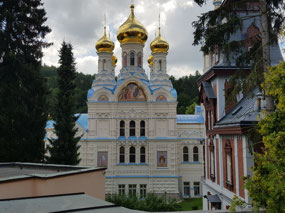
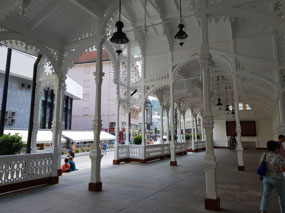




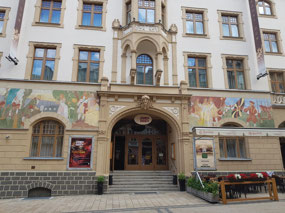








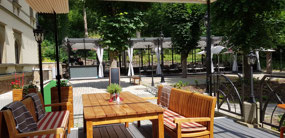
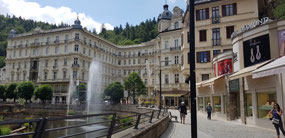
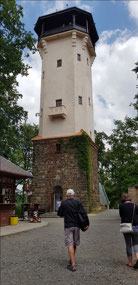
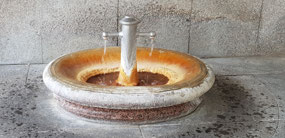

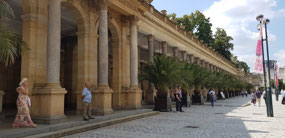
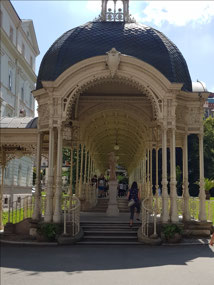
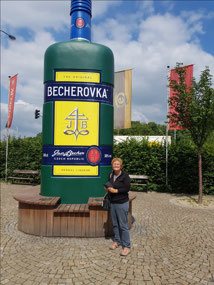
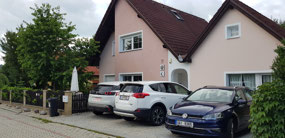
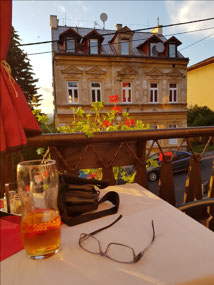
2025-05-22